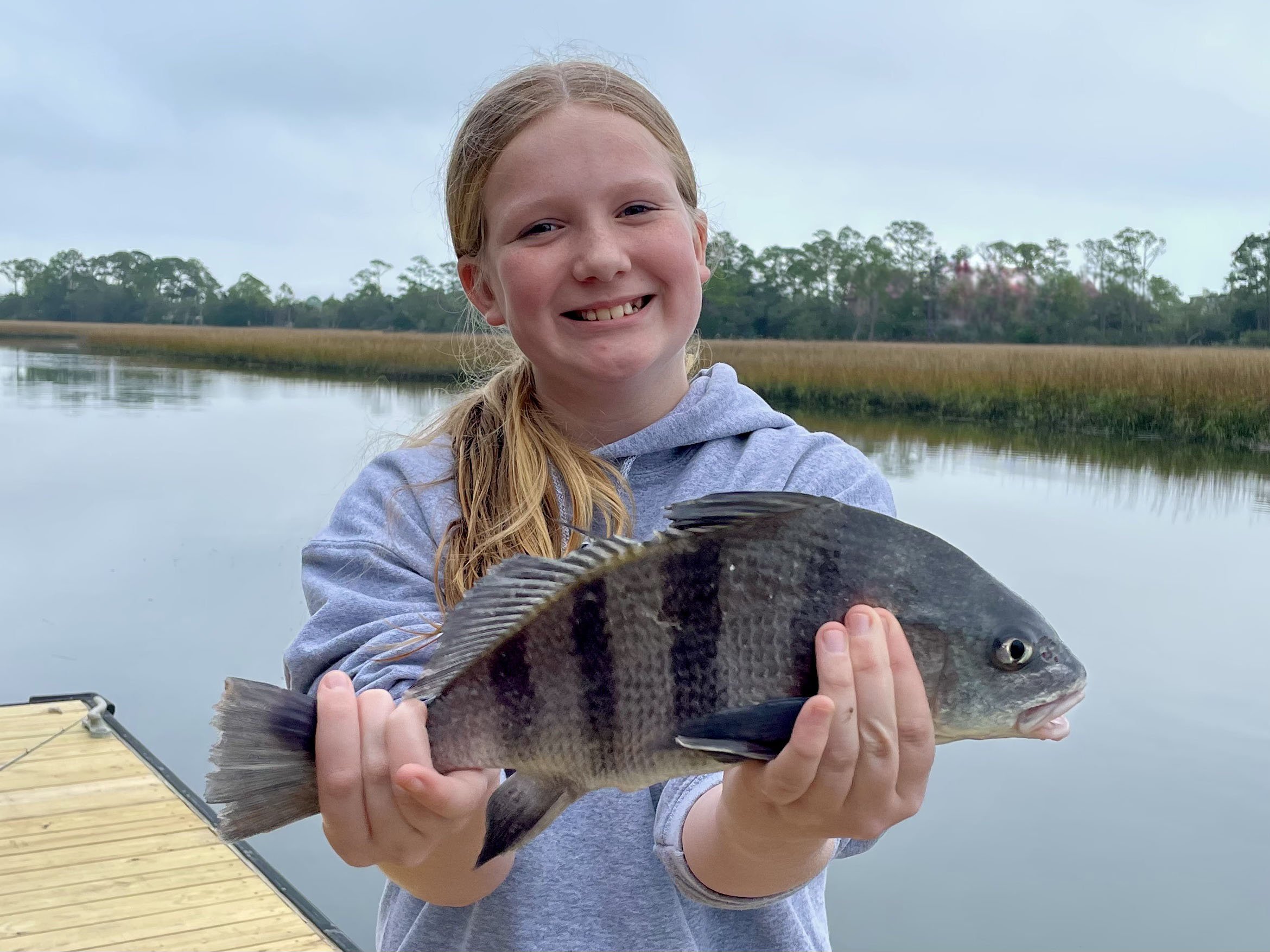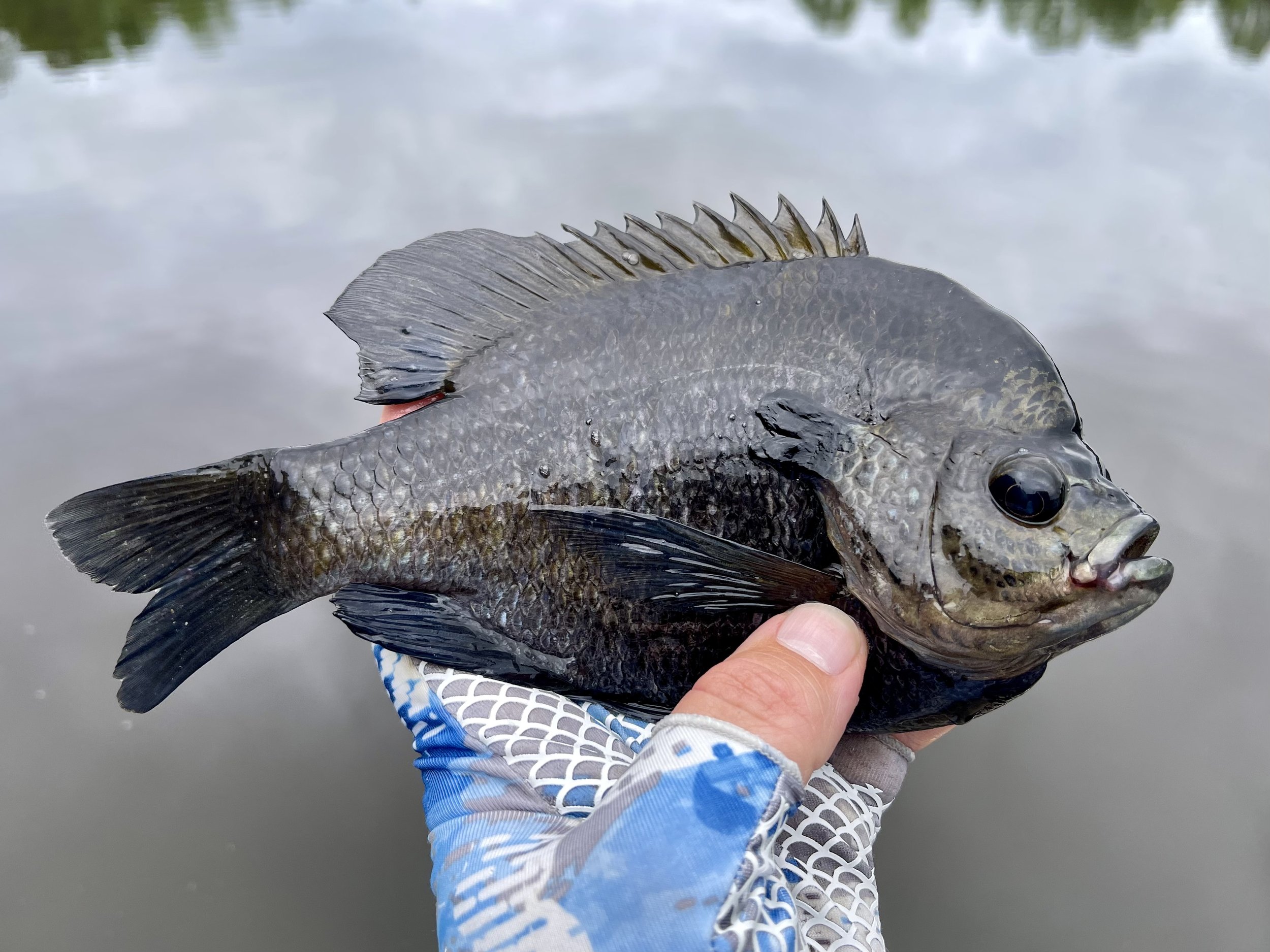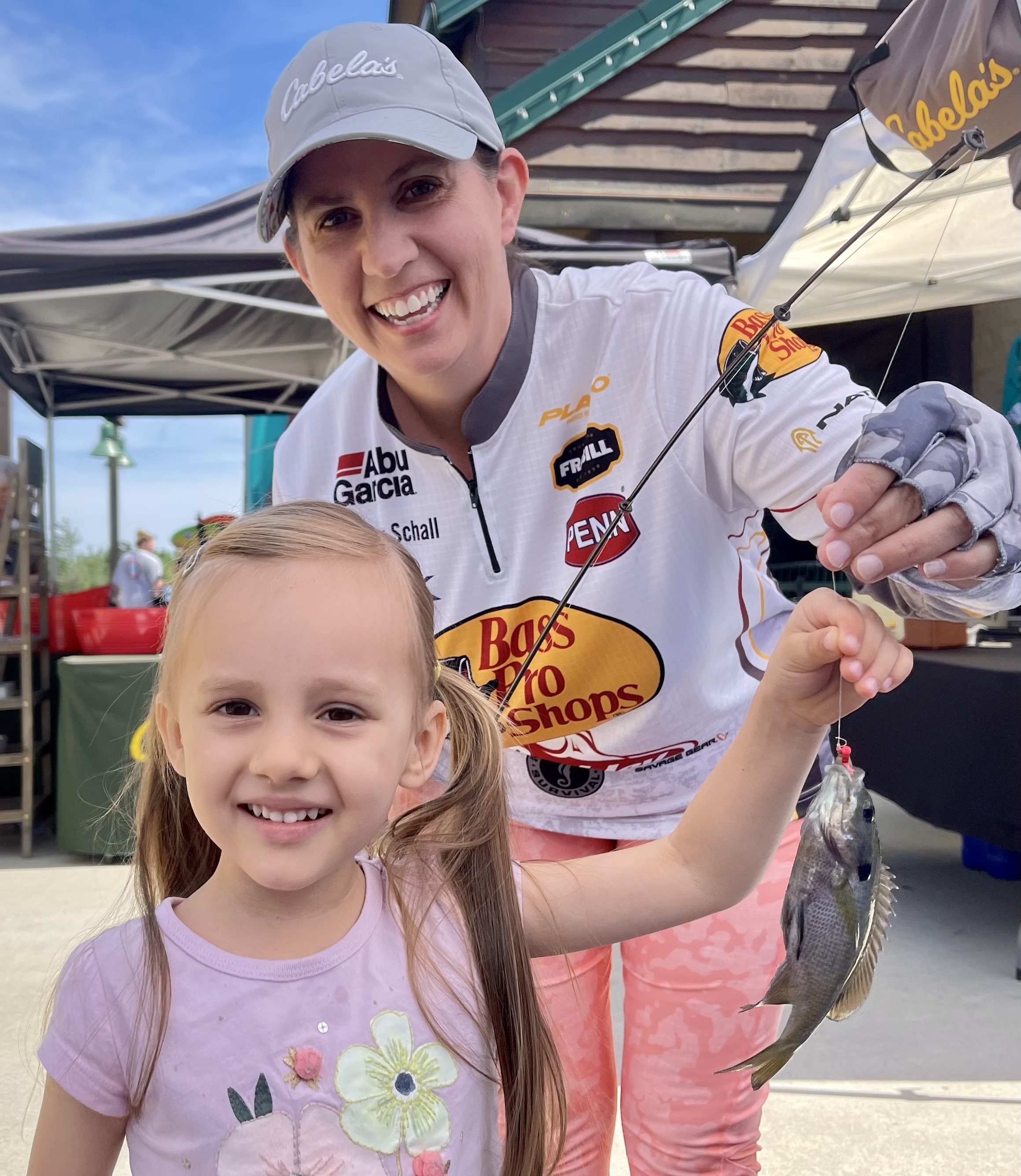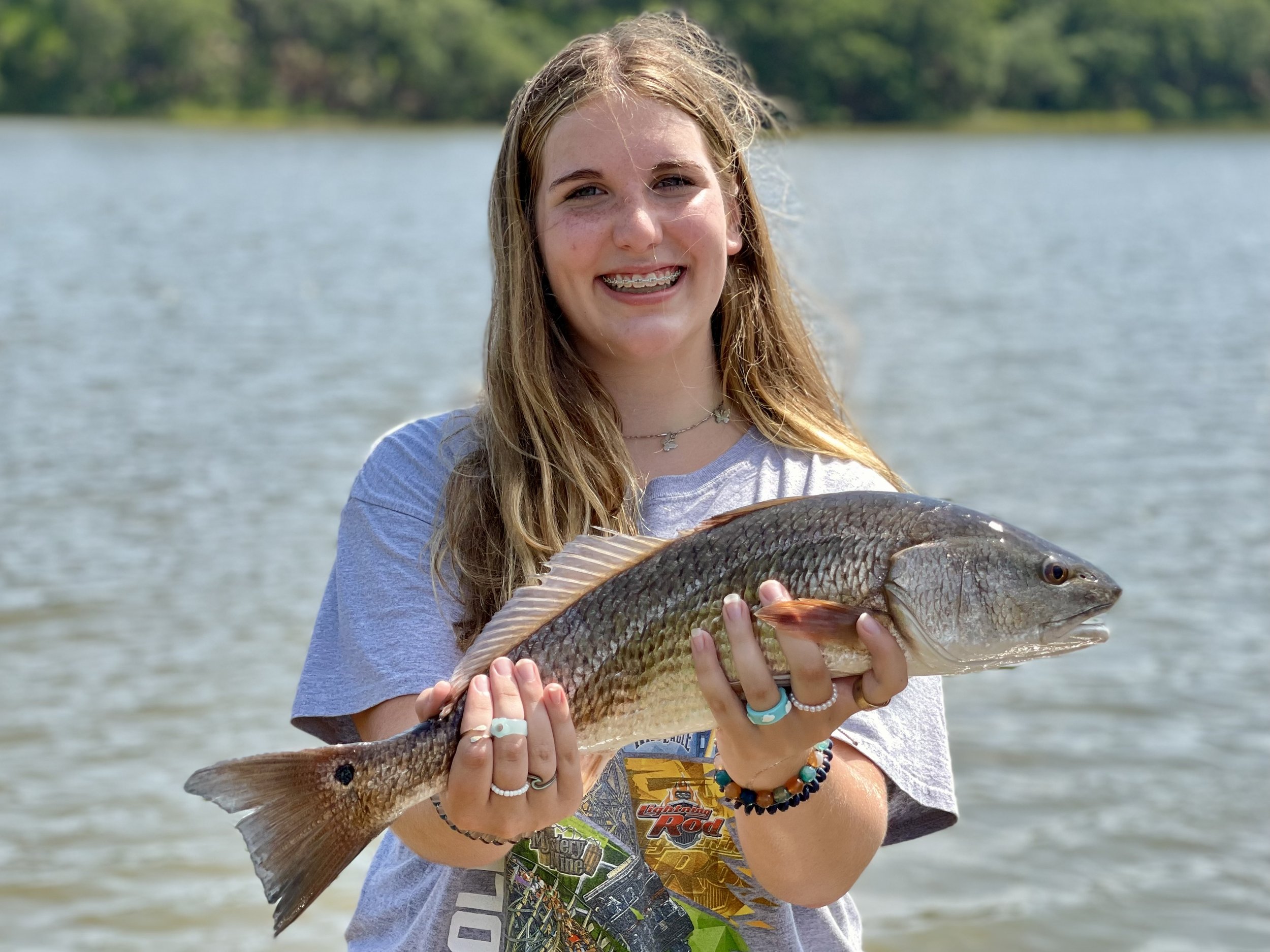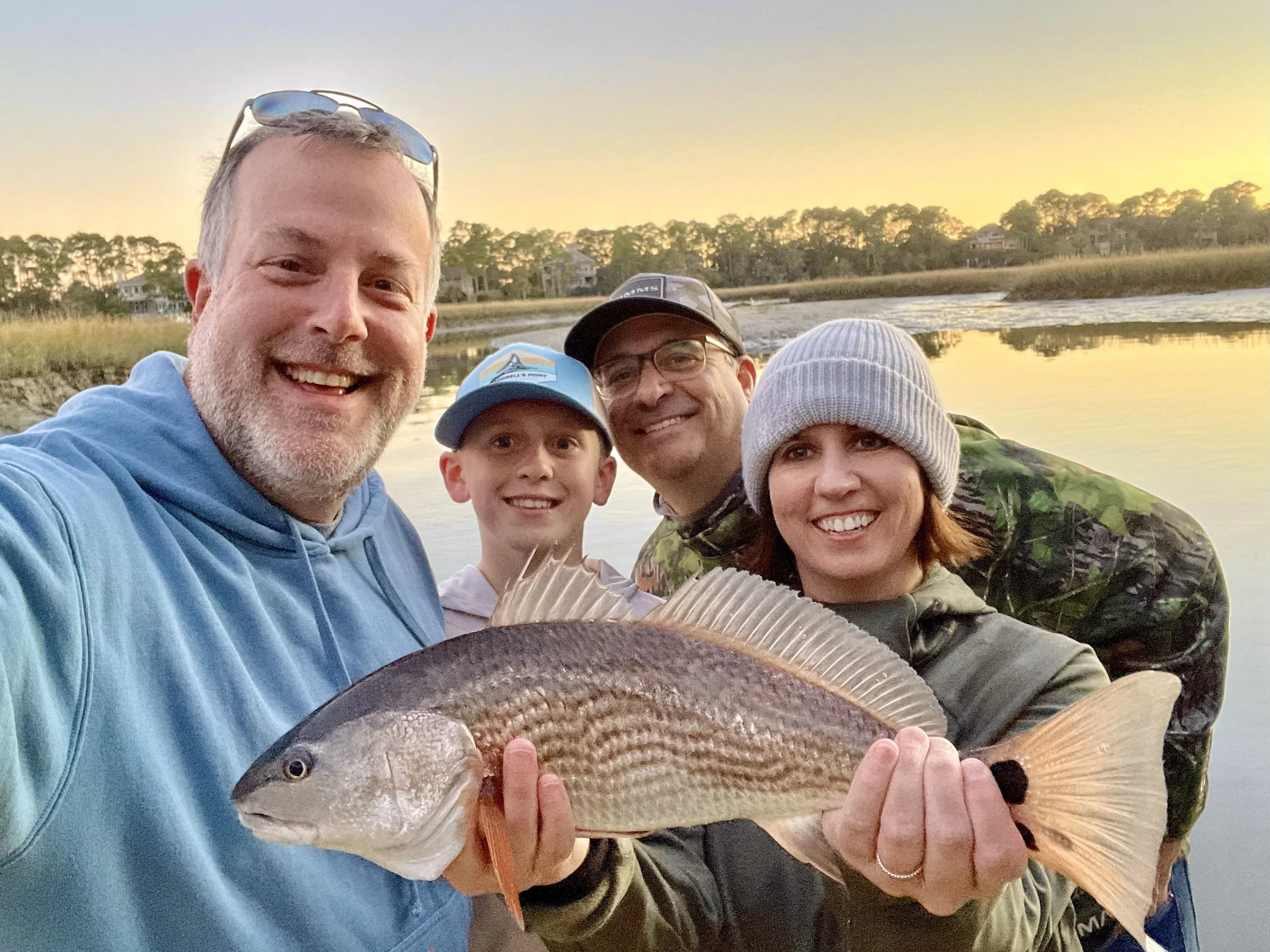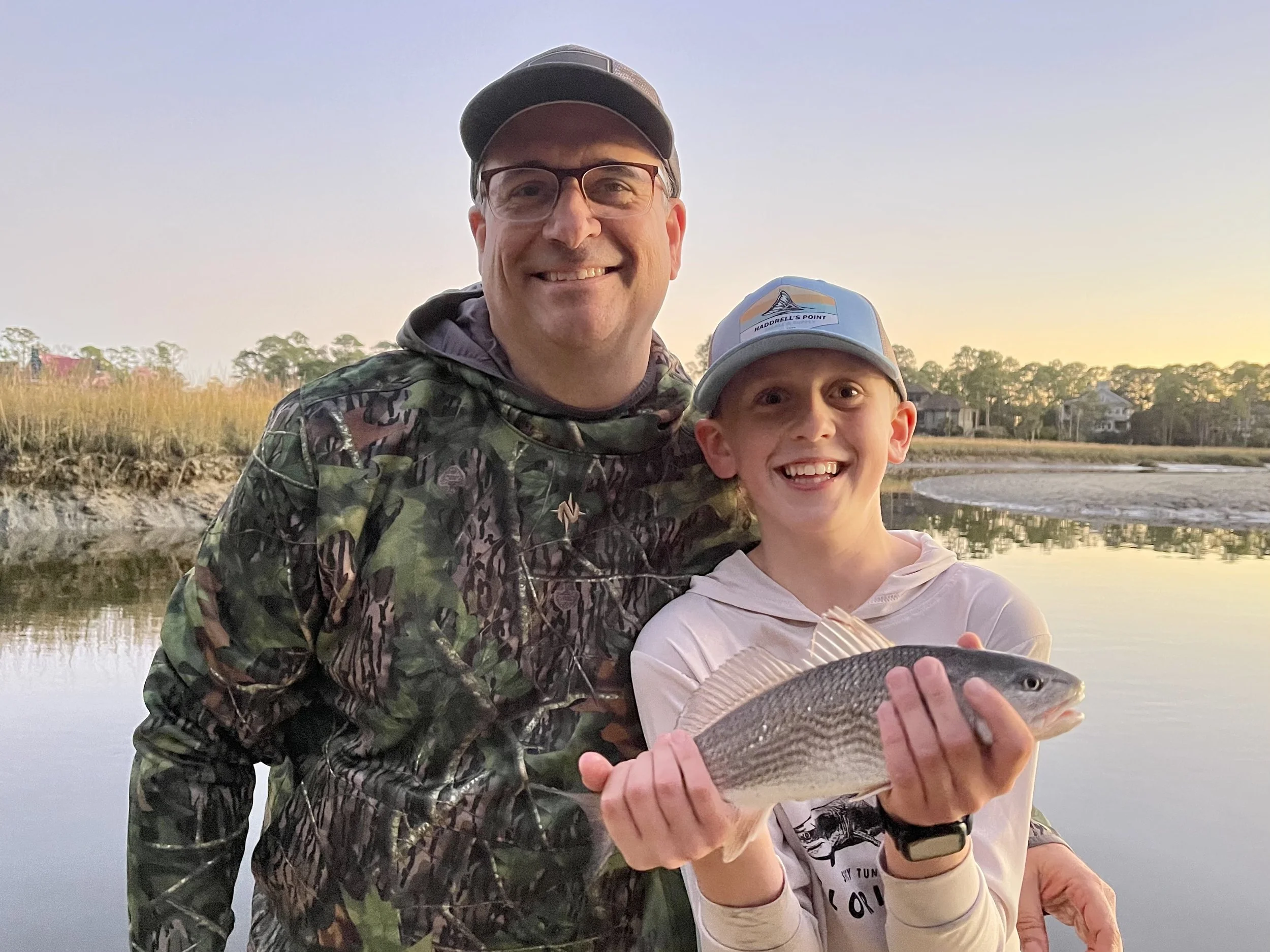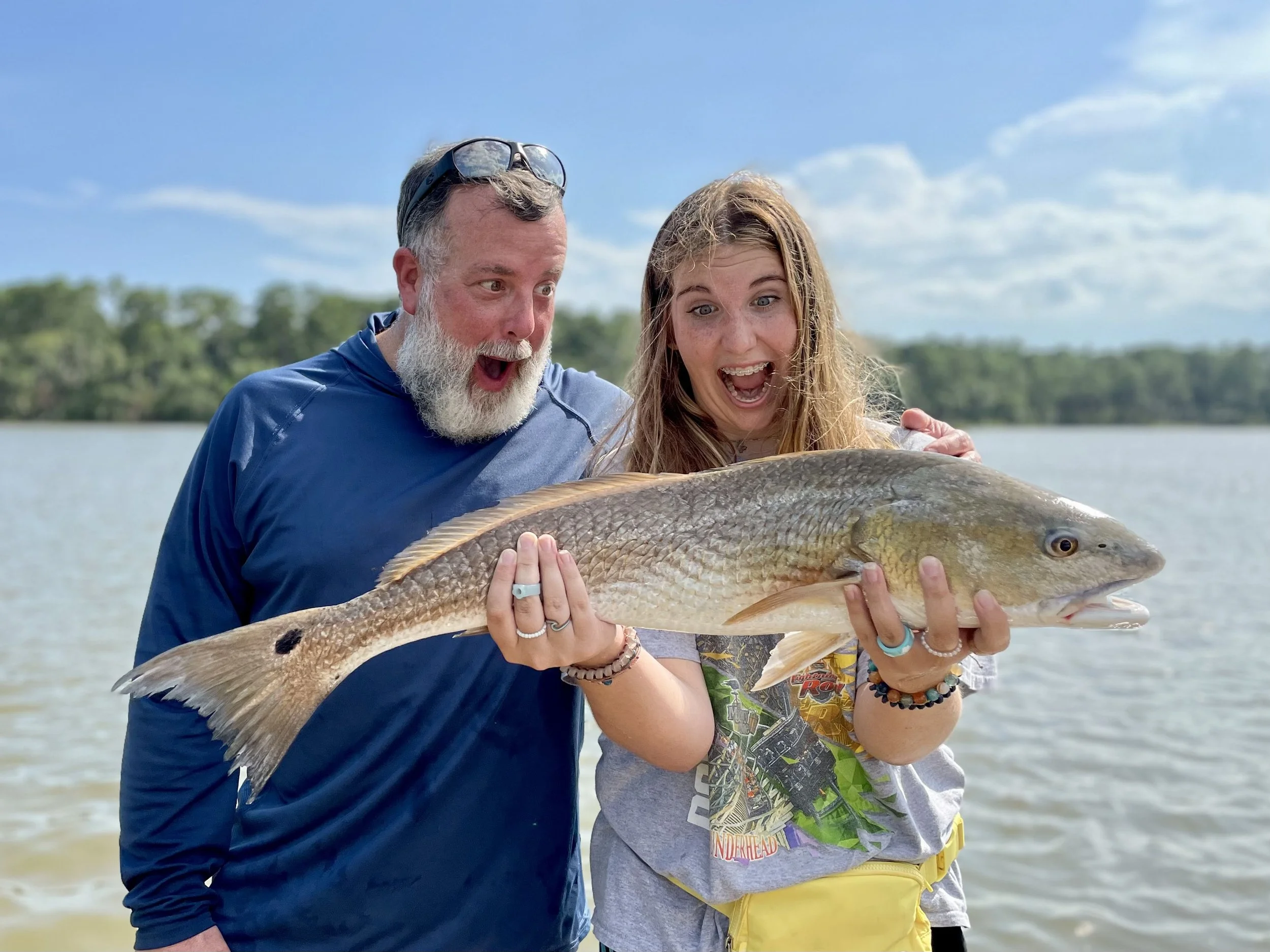Take More Kids Fishing
One of the most rewarding activities we enjoy is introducing our love of fishing to kids and their families. It’s something that we pursue every year, and we’re going to share some tips to help get more kids involved. Fishing is an activity that is suitable for nearly all ages and abilities, and it can become a lifelong passion!
Redfish caught from Lowcountry dock. (Left to right: Jason, Nicholas Hodges, Jeremy Hodges, Jennifer)
Location: Choosing the right location will depend on the type of fishing you are planning to do, and you also want to consider accessibility and available amenities. There are many great spots here in the Lowcountry that are kid-friendly, accessible, safe, and offer good prospects for catching a fish! The Mount Pleasant Pier and the newly refurbished Folly Beach Pier are great family-friendly spots for saltwater fishing. Freshwater spots are abundant in local parks and waterways – for example, check out the fishing pond at Ashley River Park in Summerville, and neighborhood ponds are great places to find sunfish, largemouth bass and catfish. We prefer locations with amenities that cater to families with restrooms, picnic tables, and possibly other activities to keep everyone engaged.
Gear: Once you have the location figured out, now it’s time to organize the fishing tackle. We like to keep things as simple as possible to not overwhelm the anglers-in-training! We use a medium rod and spinning reel combo that can take a little abuse, such as an Ugly Stik GX2 Spinning Youth Combo. For fishing line, we select a monofilament line based on the recommended line weight for the reel. We stock up on hooks (worm hooks for freshwater, circle hooks for saltwater), weights, and bobbers, and we pack tools including scissors, pliers, and wire cutters. We also recommend a rubberized landing net to help safely land a catch, and to keep the fish safe and controlled while removing the hook and releasing back to the water. And don’t forget about fishing licenses! Children 16 years old and younger do not require a fishing license in South Carolina for recreational fishing, but anyone older than 16 must have the proper license. You can refer to the South Carolina Department of Natural Resources (SCDNR) website for all license requirements.
Redfish caught from Lowcountry dock. (Left to right: Jeremy Hodges, Nicholas Hodges)
Bait: We love to use artificial baits when we are fishing by ourselves because it provides options to quickly change tactics based on what is attracting the fish. However, artificial baits may be a little more of a challenge to a child or a new angler, which is why we prefer to start off with live bait (any type of bait that is currently or used to be alive). For saltwater fishing, the easiest option is picking up some shrimp from your local grocery or seafood store. We are fine with using headless shrimp as long as the shell is intact. So many saltwater species, including red drum, black drum, flounder, and croaker love shrimp all year, making it an easy and accessible choice. Make sure you bring a small cooler to keep the shrimp fresh, especially if you are out fishing on a warm day! For freshwater fishing, night crawlers will always yield some success for largemouth bass, crappie, and other sunfish. Often times you can find night crawlers at a nearby gas station or outdoor retailer.
Putting it all together: Once you’ve found the fishing spot, have your gear organized, and bait in hand, then it’s time to take the family fishing! In addition to your gear and bait, don’t forget to pack the right attitude! Fishing takes a high level of patience, even more so when you are with a new angler (and especially with children). Make it fun and look for teaching opportunities throughout all aspects of the day. You can foster a sense of respect for nature and the environment, and demonstrate conservation tactics such as catch-and-release and responsible harvesting. There are teaching moments in tying knots, baiting hooks, casting, and surveying the water for signs of marine life.
“Biggest fish I’ve ever seen!” Jason and Mary Lois Gregg with a Lowcountry redfish.
More than likely something won’t go as planned during the day – the hook will get snagged on some structure, a fish is lost, or gear is dropped in the water, never to be seen again. When these things happen, it is important to stay calm and keep things in perspective to avoid turning the day into a bad experience. We’ve talked with many people over the years about fishing, and so often we’ve heard stories about how they were turned off from fishing as kids because they were chastised for a mistake. These things happen to all anglers, so remember why you are there – to help create a passion for the outdoors and fishing, which includes learning how to navigate the highs and the lows of the sport.
For us, teaching others how to fish is just as rewarding as bringing in a record catch. The bonding, fellowship, and memories made on the water are priceless, and nothing makes us happier to see kids and their families continue their fishing journey on their own.
If you want more information on getting started on fishing, check out the SCDNR site for instructional information and details on upcoming Family Fishing Clinics held throughout the state all year long.
